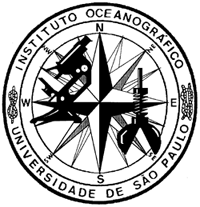The liquid effluent from an oil maritime terminal, with produced water as the main component, had its toxicity evaluated through toxicity tests with the diatom Skeletonema costatum. Two previously treated effluent samples (effluents A and B), were provided by PETROBRAS for the experiments. Both samples presented high salinity (67‰ for effluent A and 62‰ for effluent B) and low pH values (6.2), whereas total sulphide, phenol and nutrient content, dissolved/dispersed petroleum hydrocarbon concentration, BOD and COD values were quite different from each other. During the toxicity experiment, three replicate flasks with samples for each treatment were exposed to a light radiation of 266µE m² S-1 and maintained under a 10 h/14 h lightldark cycle, at a temperature of 24 :t 2ºC. The EC50 values could not be accurately estimated for effluent A: 60 h and 132 h after starting the experiment they were below 3% and between 3-6% effluent concentration, respectively. Synergistic effects between effluent toxicity and salinity on the growth of S. costatum were detected. The effluent B showed higher toxicity: the EC5O values were 0.17% and 0.40% of effluent concentrations, after 48 h and 96 h, respectively. These results evidenced the deleterious effects of residual organic compounds contained in the aqueous effluents from the oil terminal under the present pretreatment on S. costatum. In the light of the present data, the direct disposal ofthese effluents into São Sebastião Channel waters might be very hazardous to its indigenous biota.
Produced water; Oil terminal; Toxicity tests; Skeletonema costatum
